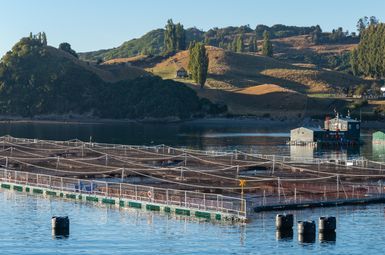
Humanity can farm more food from the seas to help feed the planet while shrinking mariculture’s negative impacts on biodiversity, according to new research led by the University of Michigan.

Ecosystems face increased challenges — both directly and indirectly from climate change and the built environment. University of Michigan experts are on the cutting edge, developing strategies to conserve or restore natural habitats, and manage fisheries, estuaries, forests, and other resources sustainably so that we can preserve those environments and ecosystems for a long time to come. Key to this effort are experts at Forests & Livelihoods: Assessment, Research, and Engagement (FLARE), the National Estuarine Research Reserve System Science Collaborative, and the University of Michigan Biological Station.

Humanity can farm more food from the seas to help feed the planet while shrinking mariculture’s negative impacts on biodiversity, according to new research led by the University of Michigan.
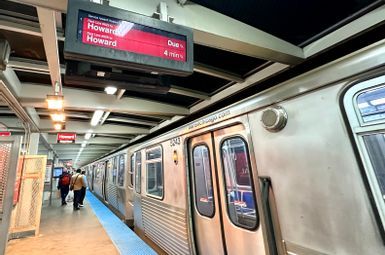
Research led by the University of Michigan arrived at a surprisingly unsurprising result while assessing the sustainability gap between public transit and services like Uber and Lyft.
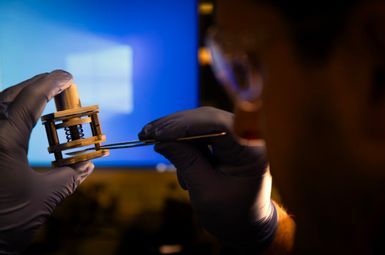
Water desalination plants could replace expensive chemicals with new carbon cloth electrodes that remove boron from seawater, an important step of turning seawater into safe drinking water.
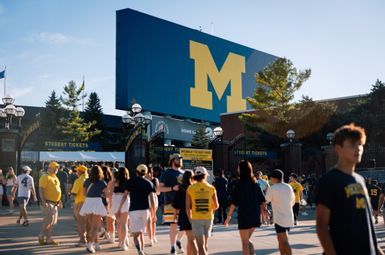
According to a new report from the Center for Sustainable Systems, the Big Ten’s 2024 expansion will more than double the average conference game emissions for the University of Michigan football team.
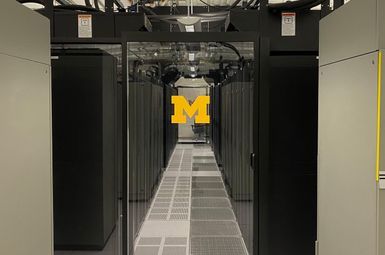
Smarter use of processor speeds saves energy without compromising training speed and performance

Not all of us can afford to wear the latest styles fresh from the world’s maisons, so we often turn to fast-fashion retailers in order to participate in aesthetic trends. But our planet cannot sustain these habits, which cause an enormous amount of textile waste that unfairly burdens communities in the global South and actively harms the environment.
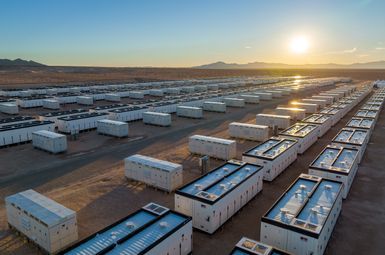
U-M has published a guidebook to help communities navigate the arrival of new battery energy storage systems amid changing energy policies.
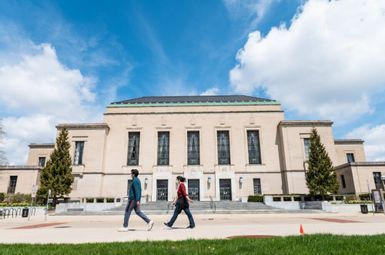
This year’s survey will focus on critical topics including carbon neutrality, transportation, waste prevention, climate change, and food sustainability. New questions on climate anxiety will explore respondents' feelings about climate issues and their experiences with direct impacts.
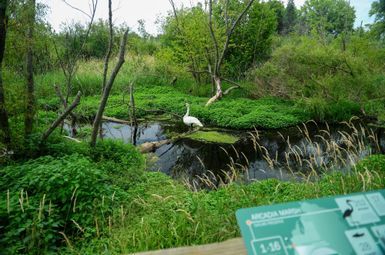
Along M-22 in northwestern Michigan, people with mobility challenges can access breathtaking views of Lake Michigan from a 300-foot-high platform, explore rare birds and plants in a restored marsh or lose themselves in coastal dunes and forests once off-limits.
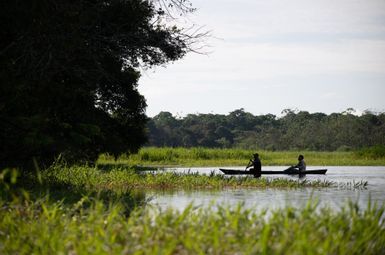
Hundreds of terrestrial and aquatic animal species live in the Boca do Mamirauá Reserve, located in the upper reaches of the Amazon, at the confluence of the Solimões and Japurá rivers. It is the first destination of the U-M Pantanal Partnership students this year.
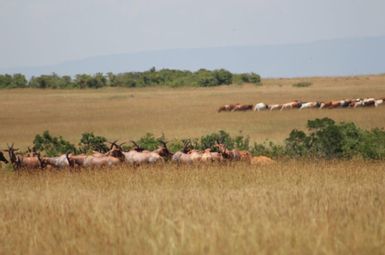
The Maasai Mara National Reserve was established to protect wildlife, yet it has seen populations shrink among its large, iconic herbivores, including zebras, impalas and elephants, over the last few decades.
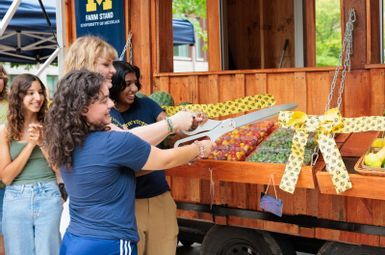
A new trailer is an exciting step forward in making fresh, local produce more accessible to the campus community.
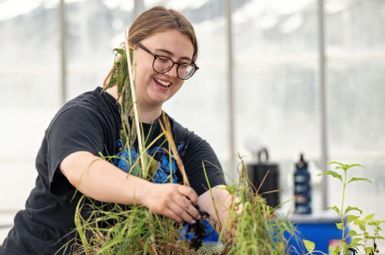
Wetlands are threatened by a variety of factors, including nutrient runoff from lawns and agricultural operations. This excess of nutrients can promote the growth of invasive species and disrupt the delicate ecosystem balance.
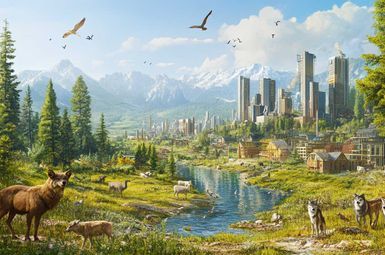
Greater human-wildlife overlap could lead to more conflict between people and animals, say the U-M researchers. But understanding where the overlap is likely to occur—and which animals are likely to interact with humans in specific areas—will be crucial information for urban planners, conservationists and countries that have pledged international conservation commitments.
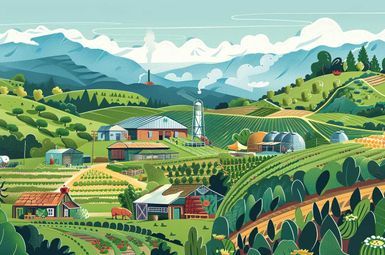
Faced with an ecological crisis, public health emergencies and socioeconomic inequities, agroecology emerges as a transdisciplinary beacon of hope.
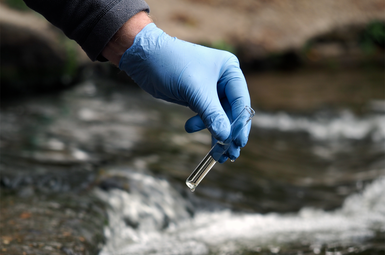
Southeast Michigan’s Huron River abounds with picturesque natural scenes, including burbling streams, graceful trumpeter swans, towering leafy trees, and… polluted foam? More than just an eyesore, this foam—now a common sight in waterways across Michigan and much of the U.S.—often contains a group of harmful synthetic chemicals called perfluoroalkyl and polyfluoroalkyl substances, or PFAS, which have been linked to a variety of negative health effects.
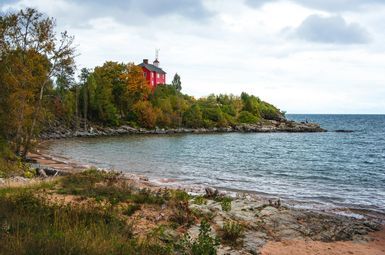
A grant from the National Oceanic and Atmospheric Administration’s Integrated Ocean Observing System will establish a Great Lakes Biodiversity Observation Network to coordinate with and learn from biodiversity observation networks along the U.S. coasts and ocean waters and other BONs in ocean and freshwater habitats worldwide.
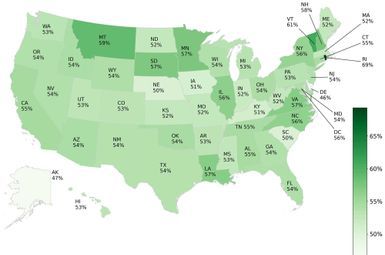
Identifying public concerns and misconceptions about nuclear energy can target efforts to bridge these gaps as nuclear energy will play a large role in goals to decarbonize by 2050, replacing oil and gas as a stable baseload electricity source.

Improving electric motor efficiency, reducing costs and ultimately making them without heavy rare-earth elements are the goals of a new $2.6 million project led by U-M.
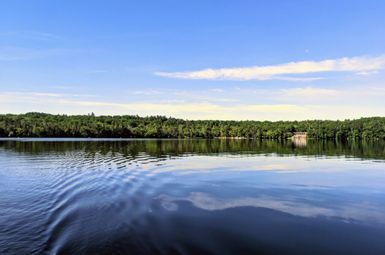
The U-M Biological Station, a more than 10,000-acre research and teaching campus along Douglas Lake just south of the Mackinac Bridge, will host distinguished scientists, artists and authors from across the United States as part of its 2024 Summer Lecture Series.

For long-haul routes below 300 miles, electrification can reduce air pollution and greenhouse gas damages by 13%, or $587 million annually, according to the study. For long-haul routes above 300 miles, electrification of just the urban segments facilitated by hub-based automation of highway driving can reduce damages by 35%, or $220 million annually.
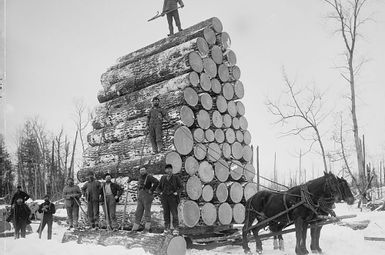
In the fall of 1881, with the opening of the School of Political Science, Professor Volney M. Spalding began teaching what was considered the first forestry course in the United States.

"Train travel in America is much more limited than, for example, in Europe. You often can’t get where you want to go. But you can get to Lincoln from Ann Arbor, with just one change in Chicago. What’s the carbon savings? A flight to Lincoln would add about 800 kg of CO2 emissions to my annual budget. The train trip is more like 85 kg. Takes more time, for sure, but that’s a big part of why emissions from train travel are so much lower."

Melinda Su-En Lee, PharmD’21, co-founded Parcel Health in 2019, while studying at the University of Michigan College of Pharmacy. The company aims to solve the waste problem caused by traditional plastic prescription bottles.
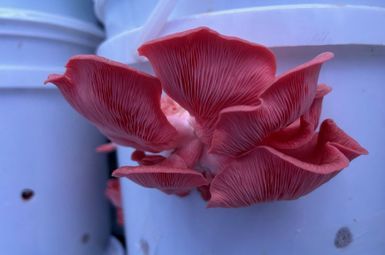
Mushrooms come with a seemingly endless list of things that make them unique, including some that glow in the dark, some that are poisonous, and others that have been living for thousands of years. In the natural world, they are known as efficient decomposers and fast growers that play an integral role in maintaining and restoring the ecosystem.
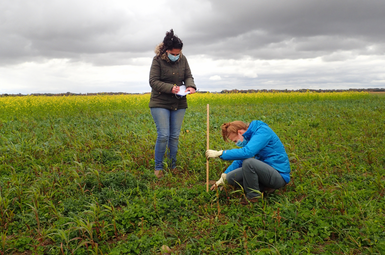
Rackham Ph.D. candidate Etienne Herrick-Sutton works with Great Lakes region farmers to identify strategies for improving the environmental and economic outcomes of cover cropping.

As the architect of the Solar Energy Research Institute, which won 42 awards and was named the most energy-efficient building in the world, Rich von Luhrte knows how something is built is just as important as what is produced and why. That knowledge and his passion for addressing climate change have led him to establish a scholarship supporting students studying urban design.
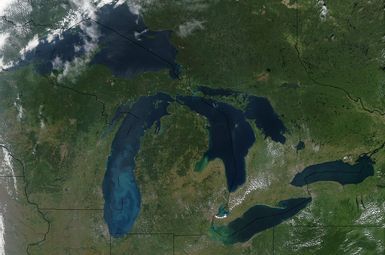
U-M is a partner in the Great Lakes Water Innovation Engine, one of ten regional hubs the National Science Foundation announced this week as part of a program that’s among the largest broad investments in place-based research and development in the nation’s history, according to NSF.
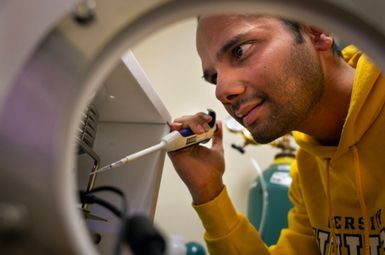
New, nontoxic materials could one day keep solar panels and airplane wings ice-free, or protect first responders from frostbite and more, thanks to a new U-M-led project funded by the Defense Advanced Research Projects Agency. Existing materials used to accomplish these feats come with serious downsides. For instance, road salts prevent pavements and streets from freezing but also corrode concrete and enter natural freshwaters through runoff, to the detriment of aquatic life.
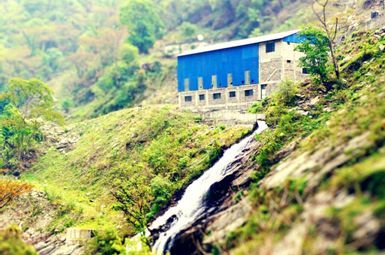
Four newly awarded sustainability “catalyst grants” at U-M are piloting innovative ways to bolster climate resilience and sustainability. Funded by the U-M Graham Sustainability Institute, these projects will explore renewable energy deployment in Nepal, climate justice in the Midwest, textile recycling innovation and equitable transportation planning.
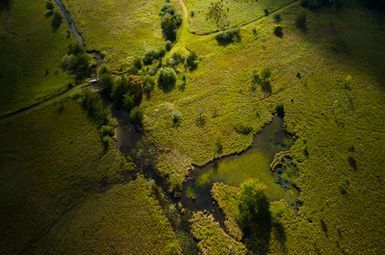
A conservation easement permanently protects private land by limiting the type and amount of development on a property, and restricting other uses that would damage natural features such as rich soils and high functioning wetlands.
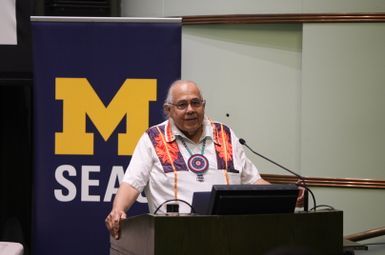
The need for a compact came when, twenty-five years ago, a Canadian company decided they could fill tanker ships with Great Lakes water to sell to countries with water shortages. Wanting to protect the lakes, the Great Lakes states, along with Ontario and Quebec, began the complex negotiations that would lead to the formal agreement detailing how they’d work together to manage as well as protect the Great Lakes.

Since 1930, U-M has maintained the Edwin S. George Reserve (ESGR) to provide research and educational opportunities, as well as preserve native flora and fauna. The 525-hectare fenced ESGR is located in Livingston County, Michigan (about 25 miles northwest of Ann Arbor) and hosts students, postdocs and faculty as well as biologists from other universities throughout the year.
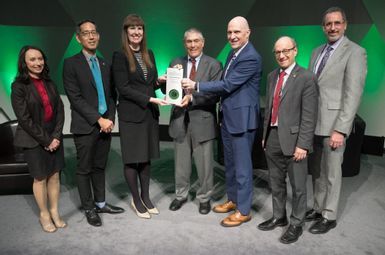
For his work refining agricultural waste into materials for lithium-ion batteries and other sustainable energy technologies, Michigan Engineering Professor Richard Laine has been honored by the US Environmental Protection Agency (EPA.)
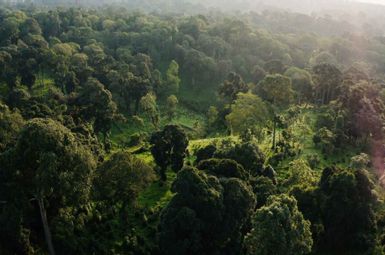
New research suggests that a realistic estimate of additional global forest carbon-storage potential is approximately 226 gigatonnes of carbon—enough to make a meaningful contribution to slowing climate change.
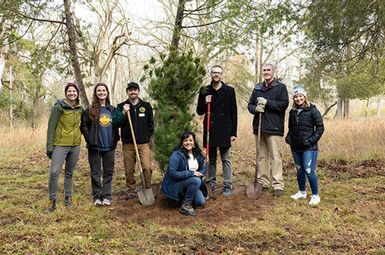
As part of the Great Lakes St. Lawrence Governors and Premiers’ new initiative aimed at planting 250 million trees in the Great Lakes region by 2033, the U-M School for Environment and Sustainability partnered with the Michigan Department of Natural Resources ( and GSGP to hold a ceremonial tree planting on November 9 at one of SEAS’ research natural areas.

LSA’s Detroit River Story Lab teaches students from elementary school through college about the past and future of the vibrant body of water.
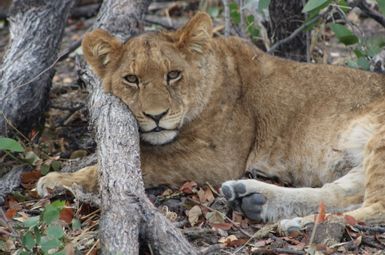
Humans and wildlife, including large carnivores, interact at an unprecedented scale as they increasingly share the world’s landscapes. A new U-M-led study of human-lion interactions found that lions tend to avoid human-dominated areas unless they are facing food scarcity and habitat fragmentation.
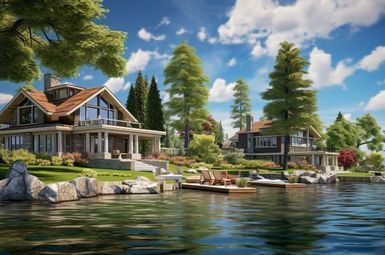
Nearly $1.23 billion has been spent by the U.S. government since 2004 on the cleanup of toxic pollutants in waterways resulting from manufacturing activities in historic areas around the Great Lakes.
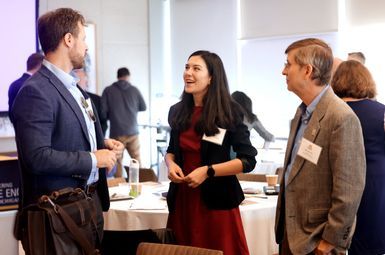
Electric and hybrid aircraft, hydrogen power, advanced airframes and more were on the table at U-M's first symposium on sustainable aviation.
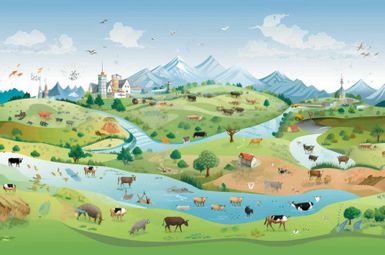
Agriculture can both help and hinder: It can act as an incubator of novel animal-borne microbes, facilitating their evolution into human-ready pathogens, or it can form barriers that help block their spread.
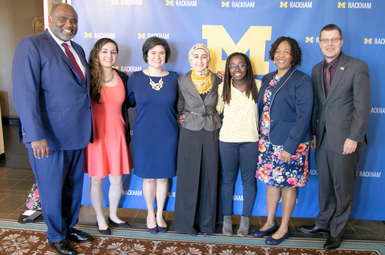
The old adage “the end justifies the means” is one way to critically paraphrase the philosophical underpinnings of the early 20th century environmental conservation movement. Historically, conservation leaders have stolen land from Indigenous people, enacted eminent domain land grabs, and perpetrated other unjust actions in service of environmental conservation. Rackham alum Rebeca Villegas (M.S., M.U.R.P. ’20) is changing that harmful dynamic.
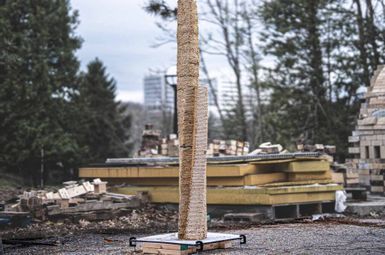
The BioMatters team at U-M has developed a fully biodegradable, reusable and recyclable material to replace the wasteful concrete formwork traditionally used across the construction industry. The base of this material is upcycled sawdust—millions of tons of sawdust waste are created each year from the 15 billion cut trees and often burned or dumped in landfills left to contribute to environmental pollution.
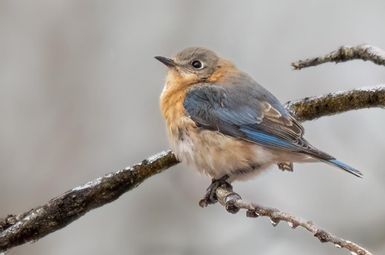
Bird populations in the U.S. and Canada have declined by nearly 30% since the 1970s. This alarming number highlights an urgent need for action. While the issue may seem daunting on a large scale, there are significant measures we can take at the local level to help stem this loss and create a positive impact for native birds.
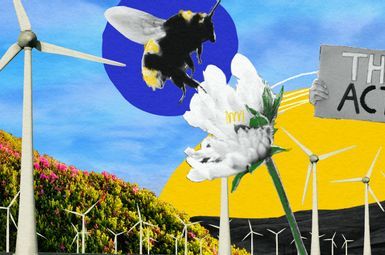
"Join the conversations already happening rather than remake the wheel. Climate anxiety is very real, and research shows individual actions don’t help reduce that, but collective action—joining groups, clubs, green teams, nonprofit organizations, local watershed coalitions—actually does reduce climate anxiety and eco grief."